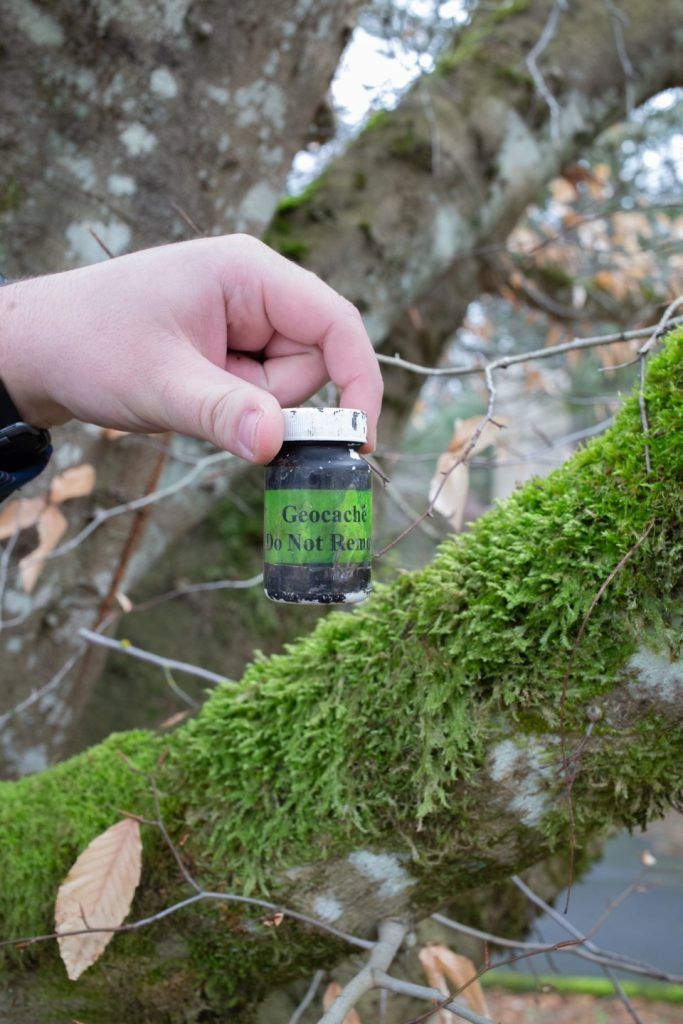Finding Hidden Treasures

Photos by Ken Perez
With the ice storms behind us and with winter ending next month, many people will be looking for activities to get them out of their homes. Just one such option is geocaching, an outdoor treasure hunting game where you set out to find a “geocache” – a cache being a hidden item or collection of items – based on given geographic coordinates.
A geocache is a container that has a logbook to sign, and sometimes has other items inside. The size of the container can range from a thimble to a shipping container. The most common size of geocaches are somewhere between a film canister and an ammo can.
Geocaching first started on May 3, 2000, just one day after selective availability was removed from the Global Positioning System (GPS) now in widespread use. This gave the public access to determine and to receive more-precise GPS coordinates.
That May day, a man named Dave Ulmer placed the first geocache, a large, black, plastic bucket. He proceeded to post the coordinates on a Usenet newsgroup. Within the first few days, multiple people found it.
Now, there are over 3 million geocaches hidden around the world. There was even a cache placed on the International Space Station.
To find your first geocache, you will first need the specific coordinates to one. There now are multiple websites and apps with locations to geocaches. The most popular site and app used by most enthusiasts is geocaching.com.
Now you will need to look online for a cache you want to find. Some caches are under a lamppost, for example, while others can demand quite the hike. Each geocache has some basic information, such as how hard it will be to find, how difficult the terrain is to traverse, and what the general size of the container will be.
Before you start looking for that geocache, you will need to bring a pen. For in order to claim you’ve found a cache, you will first need to sign the logbook inside. It may also be a good idea to bring hand sanitizer and gloves. You never know what you’re going to find while digging around for a cache.
It is also a good idea to bring along a couple of small knickknacks. Sometimes, depending on the size of the cache, it may have some items inside. These items are called SWAG (Stuff We All Get). The swag inside geocaches are usually keychains, small toys, and other similar items. If you wish to take one of these items, you must replace it with something of equal or greater value – that’s the honorable code of geocaching. It’s always a good idea to bring your own SWAG in case you wish to trade.
Now that you know the basics of geocaching, it’s time to dust off your hiking boots, and get to exploring. There are even a few hidden around the Mt. Hood Community College campus for you to find.


Leave a comment